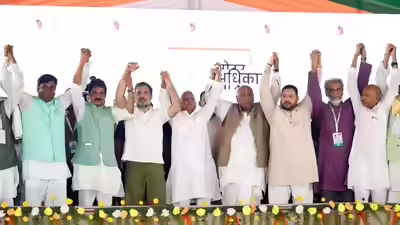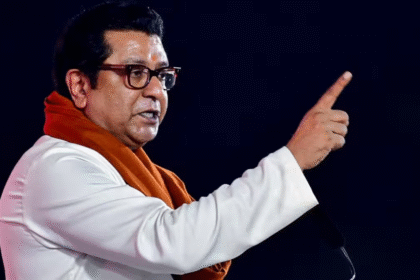Bihar Mahagathbandhan 2025: Seat-Sharing Arithmetic Across 243 Seats vs. Vote Yatra Chemistry – Who Gains the Upper Hand
Bihar Mahagathbandhan faces a test in 2025 as seat-sharing arithmetic across 243 constituencies collides with the chemistry of mass vote yatras. Will numbers outweigh ground connect
As Bihar gears up for the 2025 Assembly elections, the Mahagathbandhan (Grand Alliance) faces a complex political puzzle. While the alliance has historically relied on the combined strength of its constituent parties to challenge the ruling party, the upcoming elections present a new challenge: the arithmetic of seat-sharing versus the chemistry of the vote yatra. With 243 Assembly seats at stake, political analysts are closely watching whether strategic calculations or grassroots connect will determine the alliance’s success.
At the heart of the Mahagathbandhan strategy lies the distribution of seats among key constituents, including the Rashtriya Janata Dal (RJD), Indian National Congress (INC), Communist Party of India (CPI), and smaller regional allies.
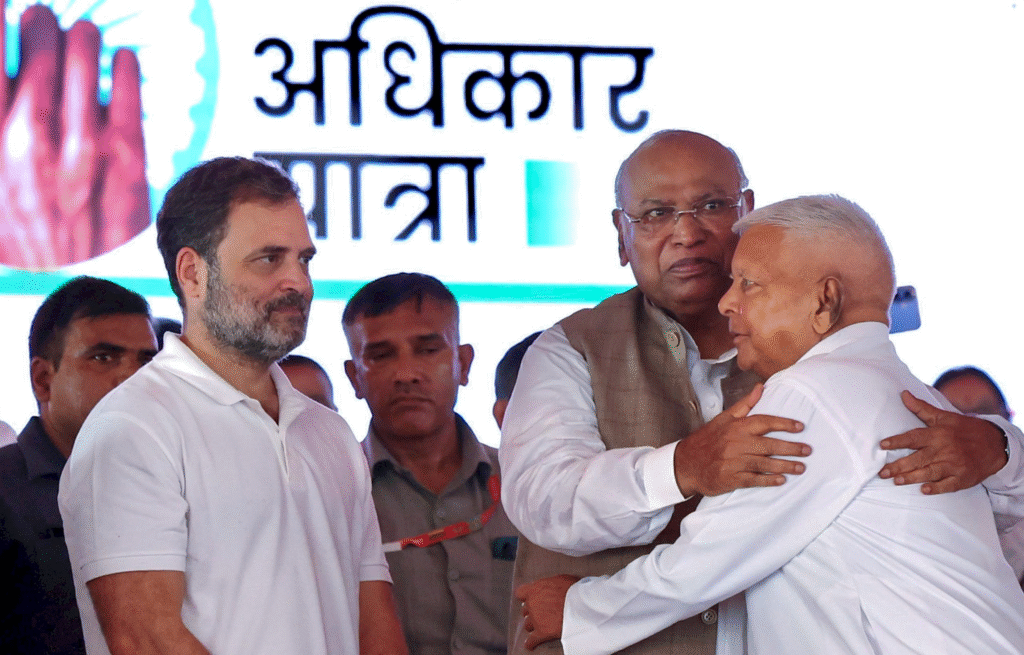
243 total seats: The alliance must carefully negotiate which party contests where, balancing winnability, caste equations, and regional strongholds.
Core allies’ demands: Each party wants a fair share of stronghold constituencies, but overlapping ambitions risk friction.
Mathematical challenge: Analysts note that misalignment in seat-sharing could fragment votes, potentially benefiting rival parties, especially the BJP-led coalition.
The arithmetic of seat-sharing is critical because Bihar’s political landscape is deeply influenced by caste-based voting patterns. Parties often calculate the optimum number of seats to contest based on historical vote shares, community demographics, and local influence of leaders.
While numbers and calculations matter, Bihar’s elections have historically been decided on the ground, with mass outreach campaigns playing a crucial role. The vote yatra — a series of rallies, public meetings, and door-to-door campaigns — serves as the lifeline for parties to connect with voters.
Leadership charisma: Prominent Mahagathbandhan leaders are expected to traverse multiple districts, building enthusiasm and reinforcing party unity.
Voter engagement: Public meetings are crucial for addressing local issues such as employment, agriculture, and infrastructure, giving the alliance a narrative beyond numbers.
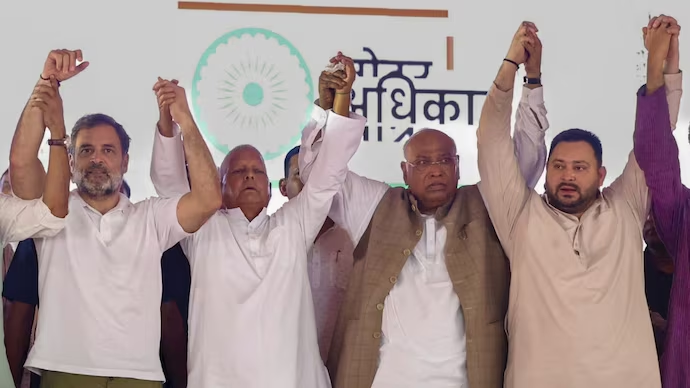
Social media amplification: Modern campaigns also rely on digital outreach, combining traditional rallies with online engagement to influence young and urban voters.
Experts argue that even the best mathematical seat-sharing formula will falter if the vote yatra fails to generate excitement or trust among grassroots voters. The chemistry between leaders, local representatives, and citizens is equally, if not more, important.
The Mahagathbandhan faces internal challenges that could test both arithmetic and chemistry:
Seat Conflicts: Disagreements over stronghold constituencies could strain relationships. For example, a seat historically held by RJD might be demanded by Congress to balance alliance expectations.
Caste Calculations: Bihar’s electorate is heavily influenced by caste affiliations. Allocating a seat to the wrong candidate or party risks splitting vote banks.
Leadership Rivalries: While leaders present a united front publicly, behind-the-scenes disagreements on campaign strategy and candidate selection could emerge.
Regional Differences: Bihar’s north-south divide in political preferences requires careful tailoring of strategies, which may not always align across alliance partners.
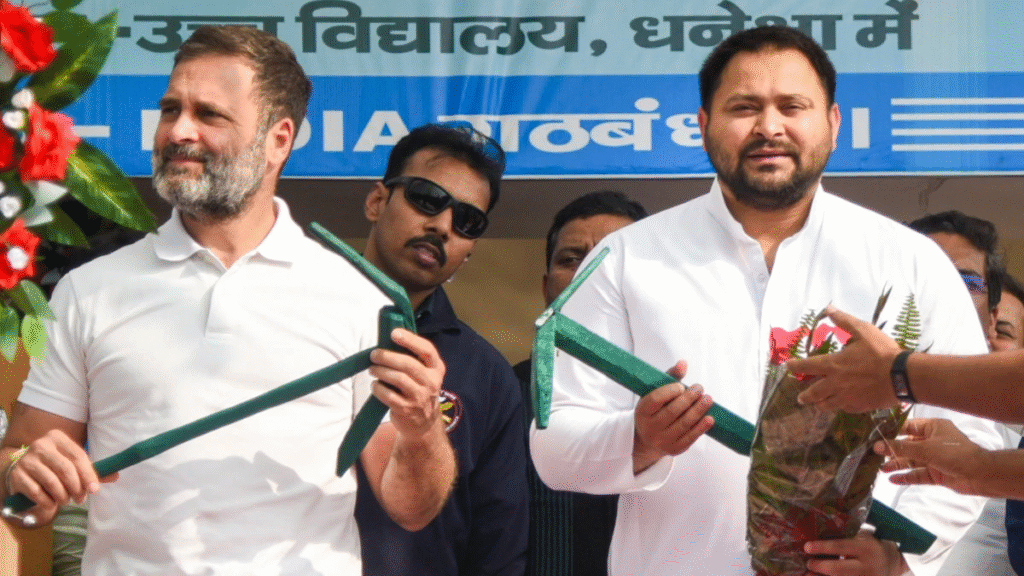
Such tensions highlight the fragility of coalition politics, where miscalculations could overshadow even the most energetic vote yatras.
The Mahagathbandhan is not new to Bihar. Its formation in past elections has offered both successes and setbacks:
2015 Assembly elections: The alliance’s numerical strength in seat-sharing aligned well with grassroots outreach, resulting in a decisive victory against the BJP.
2019 Lok Sabha elections: Despite solid vote shares, internal frictions in candidate selection led to suboptimal results, showing that arithmetic alone does not guarantee success.
2020s by-elections: Sporadic conflicts over constituency claims highlighted the need for harmony between strategy and ground connect.
These examples underscore a critical lesson: voter engagement, trust, and local connect often outweigh calculated seat distribution.
To emerge victorious, the Mahagathbandhan must strike a delicate balance between arithmetic and chemistry:
Data-Driven Seat Allocation: Parties are using past election data, caste demographics, and local surveys to ensure the most winnable candidates contest in the right constituencies.
Unified Campaign Messaging: Despite internal diversity, a cohesive narrative focusing on development, social justice, and anti-incumbency sentiment can resonate with voters.
Grassroots Mobilization: Continuous vote yatras across all 243 constituencies, combined with public meetings and interactive sessions, will reinforce voter confidence.
Digital and Traditional Integration: Leveraging social media campaigns alongside traditional rallies can help reach both urban and rural electorates effectively.
Political analysts argue that a well-coordinated campaign, combining bot
For voters, the election is about more than coalition mathematics. Citizens are looking for:
Local Development: Jobs, infrastructure, healthcare, and education remain high priorities.
Political Stability: A united and coherent alliance signals the possibility of stable governance.
Representation: Voters want candidates who understand local concerns, not just party loyalists assigned via seat-sharing arithmetic.
If the Mahagathbandhan fails to connect authentically with voters, even a perfect arithmetic strategy may fail to convert into actual wins.


